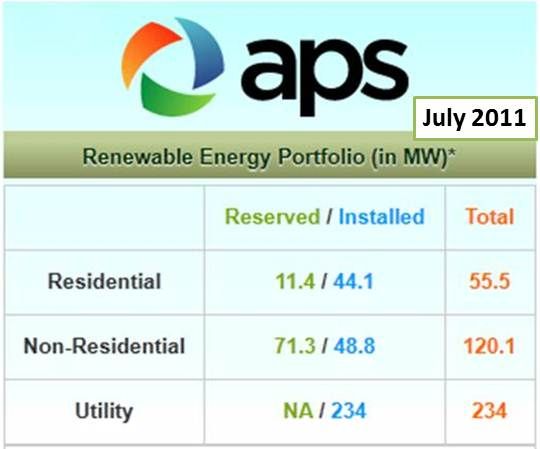In anticipation of its Phoenix Solar Summit, May 1-2, GTM continues its look into Arizona solar.
All eyes are on HB 2789, now seeking final approval in the Arizona State Senate. It would submit the Arizona Corporation Commission's constitutionally rendered power to regulate utilities to legislative scrutiny. When people in Arizona’s solar industry talk about it, one word keeps coming up.
“HB 2789,” Southwest Policy Advisors Partner Todd Landfried said, would “create market uncertainty, regulatory uncertainty and legislative uncertainty.”
“There is uncertainty,” explained Ironco CEO Sheridan Bailey, whose construction company fell to 30 employees, transitioned to the solar industry in 2008 and now employs 350. “We are making investments for growth and we are moving forward,” he said, but “investors don’t like to make bets in uncertain territories and our legislature demonstrates those radical moves that are not good for jobs, not good for the economy, not good for energy security and not good for the state.”
“I don’t think anybody can predict what’s going to happen in the last few weeks of the legislature,” noted solar advocacy group VoteSolar’s Arizona spokesperson Susannah Churchill. Many will see HB 2789’s passage “as a signal the state doesn’t want more than a small part of its electricity to come from renewables and [firms] would probably look to other states more welcoming to renewable energy investment.”
Bailey added numbers to Churchill’s observation. “There is probably $250 million worth of work and 1,200 jobs over the next three years at stake,” he said, “because of the way it demonstrates an uncertainty and inconsistency in Arizona’s renewable energy policy.”
“Investors don’t like instability,” Landfried explained. “They don’t like putting tens or hundreds of millions or even billions of dollars where some act of government can create a threat to the market.”
After the legislature’s lower house passed HB 2789, Landfried said, plans were dropped for a solar power plant near Gila Bend, a town in the state’s far south that developers had been flocking to because of its intense sun, ample transmission and proximity to the Phoenix, Tucson, Los Angeles and San Diego markets. “The land was optioned. But the developer decided the Arizona market was too unstable and decided not to exercise the option.”
It could be an ominous sign that the ACC directed regulated utilities to lower their performance-based incentives (PBIs) to commercial developers and upfront incentives (UFIs) for residential solar. “Every year, the ACC approves an annual implementation plan for the RES for the big utilities, Churchill explained. “This past year they approved quite aggressively low incentive levels.”
APS, the state’s biggest utility, had its starting UFI go from $3 per watt in 2010 to 75 cents per watt this year and had its PBI drop from 2010’s roughly sixteen-cent cap to this year’s approximately eight-cent cap, according to an SEIA authority on Arizona.


An Arizona political insider, noting that the 2012 APS solar budget of $25 million was down from over $40 million in 2011, suggested it could be associated with the political shift in the five-member ACC, which went from a one-vote staunchly pro-renewables majority to a one-vote essentially anti-renewables majority in the 2010 election.
On the other hand, Churchill noted, “solar costs have really come down. PV module costs have come down something like three-quarters in just the last three years.” That means, she explained, that developers and installers “need fewer incentive dollars to make the projects make financial sense.”
But, she repeated, “the ACC’s approved incentive levels are quite aggressively low.” While “there is good reason to decline incentives as solar costs go down,” Churchill said, “we’ll need to see what happens this year with the number of megawatts installed in relation to these very low incentives. Maybe the industry can make it work. We’ll just have to see.”
Bailey said Ironco “is growing, notwithstanding the efforts of people to settle turf issues between the legislature and the corporation commission.”
It is not, he explained, about renewable energy. “I don’t think there are many in the legislature or the state hostile to solar itself,” he said. “We may have different attitudes about whether government should be involved in subsidies of any kind,” he said, and the conservative Goldwater Institute “has been pushing this agenda for years. They’re pushing it on the basis of an ideological principle.”
Bailey supports incentives for renewables. “A surcharge is not only a subsidy, it is also an investment strategy in long-term cost control by eliminating fuel costs as a component of the power generation cycle.”
The way to deal with the state legislature, he added, is to “keep your eye on what’s going on over there and respond when it gets crazy. Politicians respond to political realities.”
That is, perhaps, why Churchill remains hopeful. “A host of polls in the last year, done by the utilities and others, clearly show Arizonans of all political stripes really support a transition to renewable energy and believe it makes sense from an energy independence perspective and from a jobs perspective.” Lawmakers who back HB 2789, she said, “are out of step with the majority of Arizonans.”



